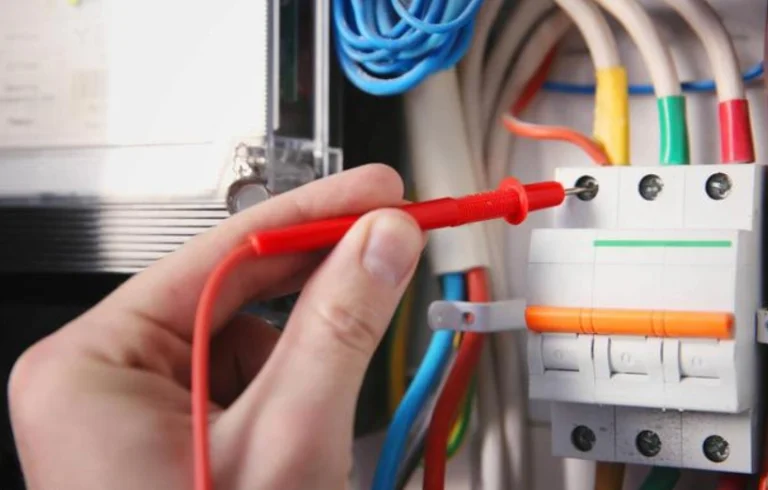Introduction
Introducing the importance of electrical wiring installation
Electrical wiring installation is the cornerstone of any electrical system, dictating its functionality, safety, and reliability. Whether it’s a new construction project, renovation, or repairs, ensuring proper installation is essential to mitigate risks such as electrical fires, shocks, and equipment malfunctions.
Overview of the expert tips to be discussed in the article
In this article, we’ll delve into various expert tips and best practices, guiding you through every step of electrical wiring installation. We’ll cover planning, design, installation procedures, quality control, and safety measures comprehensively. By exploring these essential aspects, you’ll gain valuable insights to ensure a successful outcome in your electrical wiring projects.
Planning and Design for Electrical Wiring Installation
Identifying Wiring Requirements and Circuit Diagrams
When embarking on an electrical wiring installation project, the initial step involves a thorough assessment of wiring requirements and circuit diagrams. Understanding the layout and power needs of the space is paramount. This entails identifying the locations of outlets, switches, and appliances, as well as determining the load demands of each circuit. Detailed circuit diagrams provide a visual representation of the electrical connections, aiding in the planning process.
Selecting Appropriate Wire Types and Sizes
The selection of wire types and sizes is crucial for ensuring the efficiency and safety of the electrical system. Various factors, including voltage rating, current capacity, and environmental conditions, must be considered when choosing wires. Copper and aluminum are common conductor materials, each offering distinct advantages. Additionally, the appropriate wire gauge must be selected to accommodate the electrical load without overheating or voltage drop issues. Careful consideration of these factors ensures optimal performance and longevity of the electrical wiring installation.
Considering Safety and Regulatory Requirements
Safety should always be a top priority when planning an electrical wiring installation. Compliance with safety standards and regulatory requirements is essential to prevent electrical hazards and ensure the well-being of occupants. This includes adherence to building codes, such as the National Electrical Code (NEC) in the United States, which outlines specific guidelines for electrical installations. Proper grounding, insulation, and protection measures must be implemented to minimize the risk of electrical shock, fire, and other hazards. By prioritizing safety and regulatory compliance, you can guarantee a secure and reliable electrical wiring system.
Preparation for Electrical Wiring Installation
Tools and Materials Checklist
Before commencing the electrical wiring installation process, it is essential to ensure that you have all the necessary tools and materials at your disposal. A comprehensive checklist should include items such as wire cutters, strippers, screwdrivers, pliers, voltage tester, junction boxes, conduits, and electrical tape. Having the right tools and materials on hand facilitates a smooth and efficient installation process, minimizing downtime and potential delays.
Safety Measures and Personal Protective Equipment
Safety should always be a primary concern when working with electrical systems. Prior to beginning the installation, it is imperative to implement appropriate safety measures and utilize personal protective equipment (PPE). This includes wearing insulated gloves, safety glasses, and protective clothing to shield against electrical hazards. Additionally, ensure that the power supply to the area is turned off and properly isolated to prevent accidental shocks or injuries. By adhering to strict safety protocols, you can mitigate risks and create a secure working environment for yourself and others.
Preparing the Work Area and Site Cleanup
Preparing the work area is essential for a smooth and organized electrical wiring installation process. Clearing clutter and debris from the workspace minimizes the risk of tripping hazards and facilitates ease of movement. Additionally, ensure that the area is well-lit and adequately ventilated to enhance visibility and comfort during the installation. Once the installation is complete, thorough site cleanup is necessary to remove any leftover materials, debris, or waste. This not only maintains a tidy work environment but also promotes safety and professionalism. By preparing the work area and conducting site cleanup diligently, you can streamline the installation process and ensure a successful outcome.

Actual Electrical Wiring Installation
Wiring and Circuit Installation Procedures
The actual electrical wiring installation involves following precise procedures to ensure the safe and effective deployment of wiring and circuits. Begin by carefully routing the wires through designated pathways, such as conduits or cable trays, while adhering to proper spacing and separation requirements. Secure the wires in place using appropriate fasteners to prevent movement or damage. Next, connect the wires to their respective terminals according to the circuit diagrams, ensuring proper polarity and tight connections. Test the continuity and insulation resistance of the installed wires to verify their integrity before energizing the circuits. Adhering to these installation procedures ensures a reliable and compliant electrical system.
Properly Connecting Outlets and Switches
Properly connecting outlets and switches is essential for their safe and efficient operation within the electrical system. Begin by carefully positioning the outlets and switches at their designated locations, ensuring proper alignment and clearance. Connect the wires to the terminals of each outlet and switch, observing correct polarity and tightening the connections securely. Install outlet and switch covers to provide protection and enhance aesthetics. Finally, test the functionality of each outlet and switch to ensure proper wiring and operation. By following these steps, you can ensure that outlets and switches are properly connected and ready for use.
Installing Lighting Fixtures and Other Electrical Devices
Installing lighting fixtures and other electrical devices is the final step in the electrical wiring installation process. Begin by mounting the fixtures securely to the ceiling or wall using appropriate hardware. Connect the fixture wires to the electrical supply wires, ensuring proper polarity and insulation. Install bulbs or lamps according to manufacturer specifications, taking care to select the appropriate wattage and type for each fixture. Test the functionality of each lighting fixture and electrical device to ensure proper operation. Additionally, ensure that any accessories, such as dimmer switches or timers, are installed correctly and programmed as needed. By following these installation procedures, you can successfully install lighting fixtures and other electrical devices to complete the wiring installation.